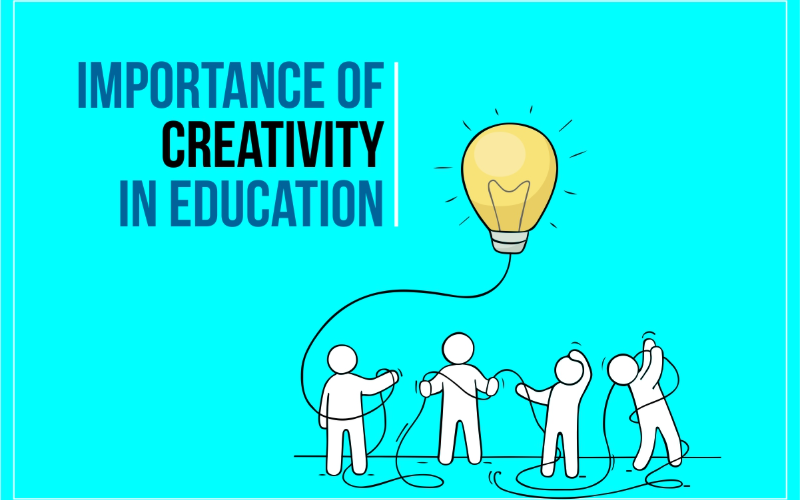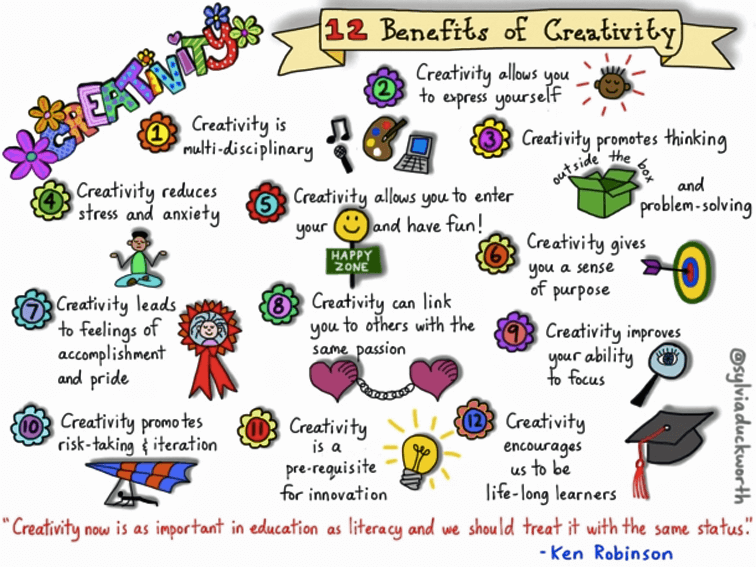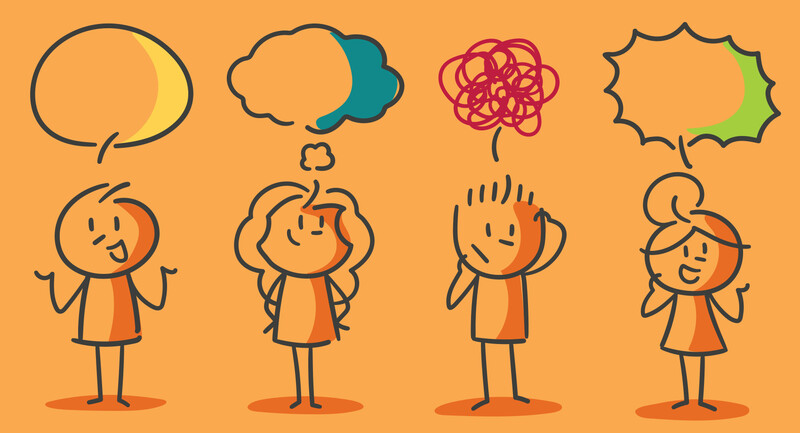Title : Role of Creativity in Education
Introduction
In the modern, rapidly changing framework of the education system, the importance of creativity has rapidly increased. As the basis for innovation, critical thinking, and problem-solving skills, creativity is key to preparing students for success in the 21 st century. Due to this fact, educators should ensure that the educational process is based on the principles of creativity leader. Using the sources on the topic, this article will cover the various aspects of incorporating the principles of creativity into the education system.
Fostering Imagination and Innovation:
Creation has always been used to fuel creative breakthroughs in every field. In the classroom, creating a culture of imagination and innovation motivates students to make adventurous forays beyond the realm of textbooks and standardized tests. Imaginative projects and creation do this by allowing students to challenge limitations and inhibition, preparing the way for revolutionary new concepts and ideas. Educators can develop a culture of innovation by fostering experimentation and inquiry that encourages students to envision what is achievable and climb to meet it. When students’ creativity and imagination are liberated, their destinies as transforming agents of desire in their residences and other institutions are likewise freed.
Encouraging Critical Thinking and Problem-Solving:
Creativity is rooted in critical thinking since both entail the procedure of questioning, evaluating, and integrating knowledge based on a new paradigm. By cultivating creativity, students are compelled to consider novel approaches to a problem, evaluate different views, and develop their problem-solving abilities. To do this, educators develop brainstorming activities, role playing, or design thinking to promote creativity . Meanwhile, the student’s work containing real-life issues teaches practical problem solving, which is a critical component of their ability to succeed in their future jobs. Art institutions foster these structures and encourage students to be skeptical of established philosophies and standards while seeking imaginative possibilities for intricate issues.
Promoting Self-Expression and Empowerment:
Creative expression allows students to express themselves without fear or limitations. In a world filled with standardized tests and rigid curricula, art, writing, theater, and other forms of creative expression help students define themselves, voice their beliefs, and connect with one another. Moreover, by encouraging students to be proud of their unique differences and abilities, educators can create a sense of belonging and purpose in students. This positive frame of mind encourages students to actively engage in learning. Finally, facilitating the opportunity to share their creative output with their peers and society can instill confidence and pride in one’s work in students.Creativity allows students to express themselves authentically, fostering a sense of fulfillment and well-being that extends far beyond the classroom walls.
Cultivating Resilience and Adaptability:
When uncertainty and change are embraced, creativity has the opportunity to flourish. Students take risks, fail over and over, strive, and recover from adversity. They learn by engaging in iteration and experimentation. Creative initiatives, in which students must experiment, fail, and try again, require students to confront uncertainty and ambiguity. Creation necessitates trial and mistakes, which challenge students to refuse failure, understand what went wrong, and refine their approach. It necessitates teamwork, which shows them that no one has all of the information, and that when everybody shares their thoughts, the results may be great more excellent than with one. Creativity empowers students to overcome obstacles with grace and determination, preparing them to navigate the complexities of the modern world with confidence and resilience.
Encouraging Collaboration and Communication:
Creative communities in which students could share their thoughts, opinions, and feedback are best suited for such purpose; educators could facilitate such communities by reinforcing the importance of teamwork and communication. The former is particularly emphasized through group work, group projects, and collaborative solutions to shared issues, whereas the latter could be stimulated by peer-review experiences . Similarly, cross-disciplinary cooperation and co-creation further inspire students to make connections between seemingly unrelated issues, processes, and phenomena. Lastly, creativity could only manifest in the environments where all students feel appreciated, respected, and entitled to speak their mind.
Conclusion
To sum up, it goes without saying that creativity in education is of great importance. Creativity is a necessary element for learning, and educators need to incorporate it as early as possible in the lives of students to nurture its benefits. Creativity is not an option but a requirement; it is the very thing that will bring salvation soon. The future will see the need to create an environment that will encourage a great sense of creativity and live with a passion for learning in the long run. Recreating education, reallocating resources to ensure there is creativity in education will radically change education and offer better-equipped students for the future. Therefore, all educators need to accept creativeness and allow the unbound creativity of the generation to come.
References:
- Robinson, Ken. “Out of Our Minds: Learning to Be Creative.” Capstone, 2011.
- Sternberg, Robert J., and James C. Kaufman. “The Cambridge Handbook of Creativity.” Cambridge University Press, 2010.
Biographical Resources:
- Ken Robinson: A leading advocate for creativity in education, Ken Robinson has delivered influential TED Talks and authored several books on the subject
- Robert J. Sternberg: A psychologist known for his research on intelligence and creativity, Sternberg has written extensively on the topic and its relevance to education.




























